Guillermo del Toro on his advice for filmmakers, screenwriting process, directing actors, art as therapy, and his favourite films.
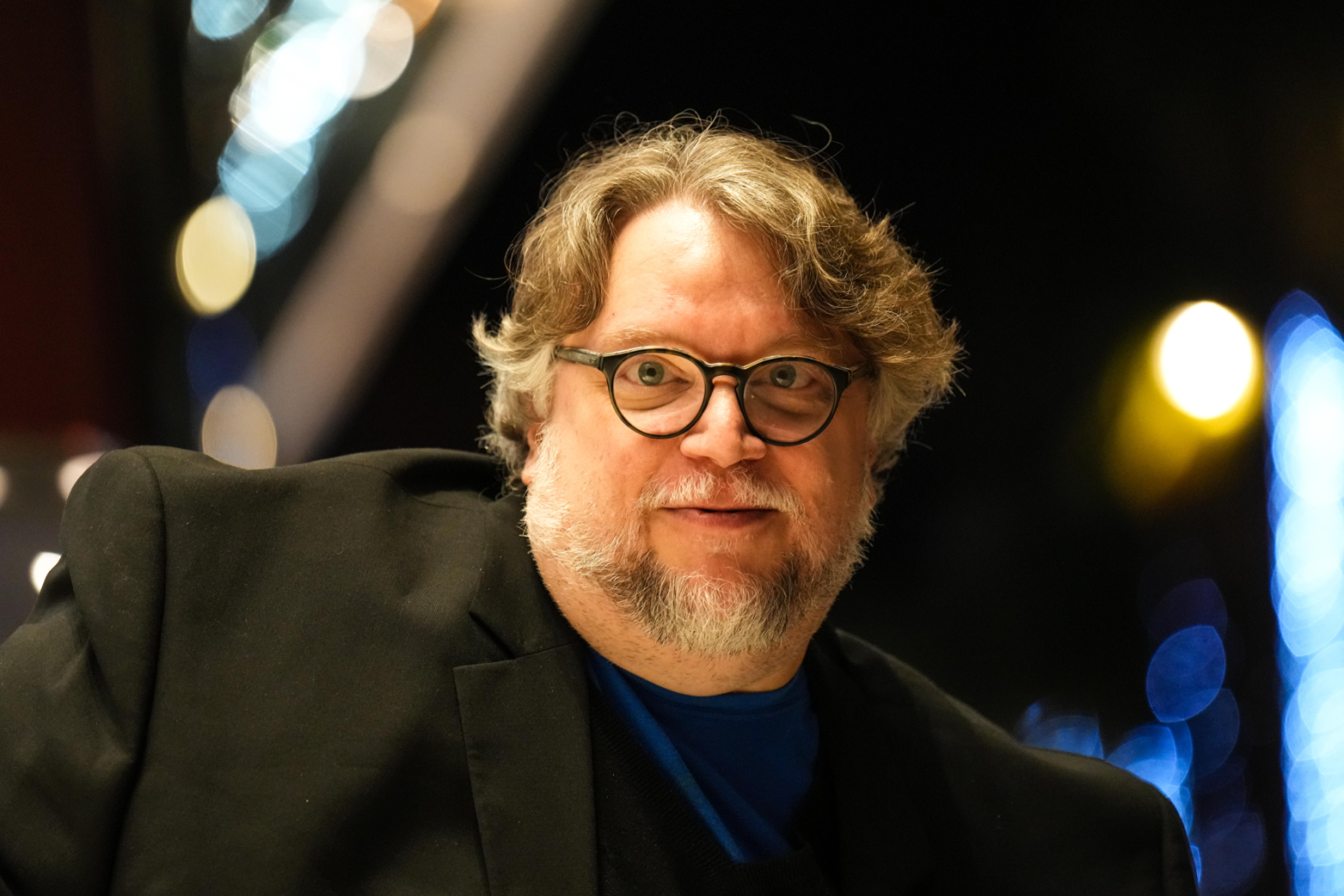
A brief overview of Guillermo del Toro before delving into his own words:
| Who (Identity) | Guillermo del Toro is a Mexican filmmaker, author, and actor, renowned for his contributions to the world of cinema and storytelling. |
| What (Contributions) | Del Toro is celebrated for his innovative works, including films such as “Pan’s Labyrinth,” “The Shape of Water,” and “Crimson Peak.” He explores themes of fantasy, horror, and dark fairy tales, often combining them to create unique cinematic experiences. His storytelling has earned him critical acclaim and numerous awards, including Academy Awards. |
| When (Period of Influence) | Del Toro’s influence has been prominent since the late 1990s, with a significant impact on the horror and fantasy genres in filmmaking. His works continue to resonate with audiences, making him a key figure in contemporary cinema. |
| Where (Geographic Focus) | Born in Guadalajara, Mexico, Del Toro’s background and heritage influence his storytelling. He often incorporates elements of Mexican culture and mythology into his work while also exploring universal themes that resonate with a global audience. |
| Why (Artistic Philosophy) | Del Toro’s artistic philosophy centers around the exploration of dark and fantastical themes, providing a lens through which to examine the complexities of human nature and society. He believes in the power of storytelling to transport audiences to other worlds while also reflecting on our own reality. |
| How (Technique and Style) | Known for his visually stunning and immersive cinematic style, Del Toro combines practical effects with a deep understanding of character development. He often incorporates elements of horror and fairy tales, creating rich and atmospheric narratives. His films feature intricate set designs and creature designs that bring his imaginative worlds to life, captivating audiences with a blend of beauty and darkness. |
This post is a collection of selected quotes and excerpts from secondary sources used for educational purposes, with citations found at the end of the article.
Death Is The Ultimate Goal Of Life
Mexicans understand that death is the ultimate goal of life, and the only thing that makes life make sense is death, that is the only thing, because if it wasn’t there, why should you live intensely? Beauty exists only in that it disappears, and joy only exists in that it is going to end. 1
Being Observant As A Director
I say that if you’re a director, if you really are a director, it’s impossible for you to say “I was bored”. Impossible. Because what we are is we are creatures that are social misfits, we do not belong really well in the real world. My social life is absolutely deplorable, but we are like spies from another country that are taking notes about how humans behave so we can reproduce it in our movies.
If you are at the DMV waiting in line and you’re surrounded by a sea of stories in the way people dress, the way people talk, in the way people posture themselves, and you are not reading that, then you’re not a director. 1
All Art Is Disobedience
All art is disobedience, because if you were a good boy you would be a lawyer or a dentist, you know, or an orthodontist or something like that. But art is disobedience because you are disobeying what is supposed to be rational and good, and advisable etc.
And you need to disobey, you need to disobey everyone along the way. You disobey your family when they say that you’re gonna do a foolish thing by embracing the arts as opposed to the business of the family or whatever it is. You can disobey your teachers at film school when they tell you that you should not do this and you should do that.
And I think that disobedience is the beginning of thought. The difference between an ideology and an idea, is that the ideology is inherited from someone else and you don’t really know how it works, you just accept that it is, it’s an article of faith. An idea is born out of instinct and experience, and you then construct your own vocabulary to articulate the world. 1
Screenwriting Process
I basically live with the movie all the time 24/7. If I’m watching a movie by somebody else I’m enjoying it, but I’m also bouncing ideas. It doesn’t have to be related, it can be a melodrama and you’re writing a musical. But you bounce all the time. You see an ad on TV, you’re walking on the street, and everything becomes a mirror to your ideas and the movie lives with you and dictates itself. I know this sounds like PR but it dictates itself, it reveals itself, it tells you where it wants to go if you live with it. 1
I read some of those manuals about writing, I mean I was taught screenwriting in Mexico for three years, and my screenplay teacher gave us basic Aristotelian things of course, like act one, act two, act three, set up, conflict, but the rest of the stuff is so constrictive and it’s not real. The main thing about a movie is flow, that’s the hardest thing to learn. Flow, it should never stop.
When you try to follow these manuals inciting incident, midpoint, all these things, I say that is the difference between being a tourist and a traveler. A tourist is the poor fuck that has 10:00 to 12:00 p.m. the Vatican, 12:00 to 12:30 lunch, 12:30 to 2:00 o’clock the Basilica. The traveler is the guy that says I’m in Rome, whatever the fuck I’m in Rome. Thats me with a screenplay. Whatever happens I’m in the screenplay. 1
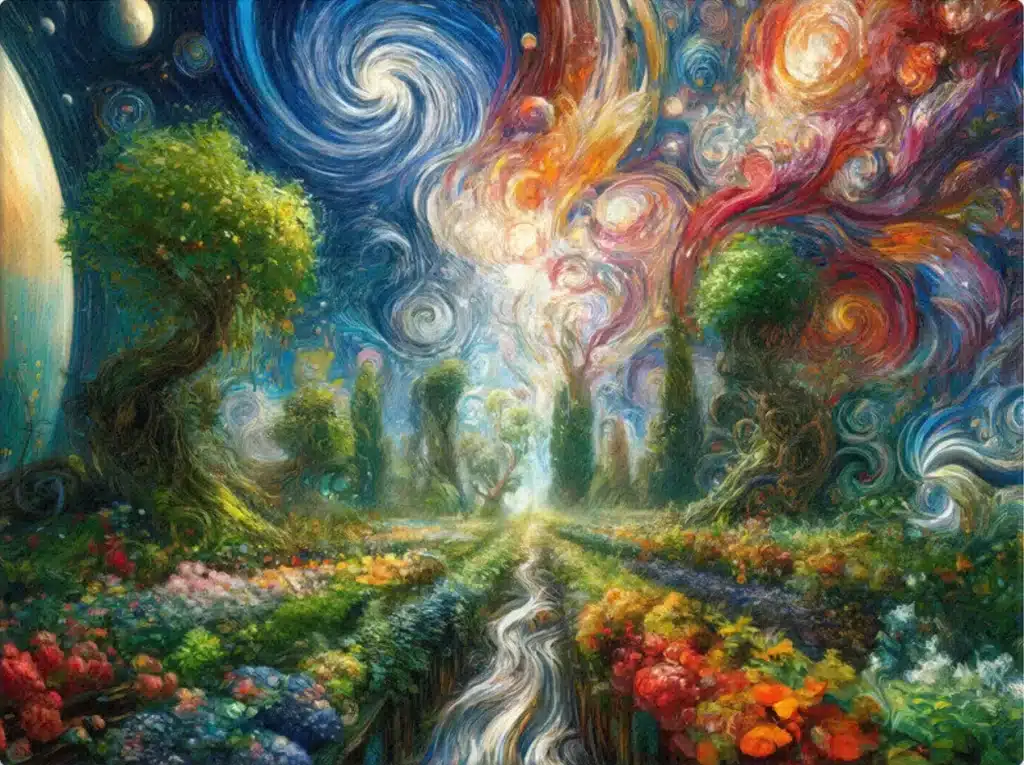

Sponsored: Canvas wall art paintings of nature and the cosmos.
Collaborating With Designers
I do a biography for the characters that is eight pages long more or less, everything about them, what they like, what they eat, what they read, what they listen to, what they don’t like, I do secrets for each of the characters, things people know, the way they perceive themselves, the way others perceive them. I give this to the design department, and I say now how do we articulate this biography with visuals and sound.
I start design before the production designer shows up. I start it with a very small group of people in what I call the submarine, its four or six designers and myself, and we start designing ideas, a basis, so when the production designer and the wardrobe designer come in, we have already 40 or 60 drawings of sets, of characters. We have a color palette, and I say this is what we’re thinking, and then they start we start a conversation.
Why do I do this? I do it because I want them to know that there’s thought before they come in that unifies everything, because people think in terms of different disciplines, and it’s a single discipline. Cinematography, production design, wardrobe, and makeup and hair are a single thing. They are not different departments, and they need to articulate in harmony or in in juxdoposition or counterpoint according to what you need. When people say great cinematography they’re saying great production design, when they say great production design they’re saying great wardrobe. Everything is of a piece, we are telling a world that needs to be of a piece. 1
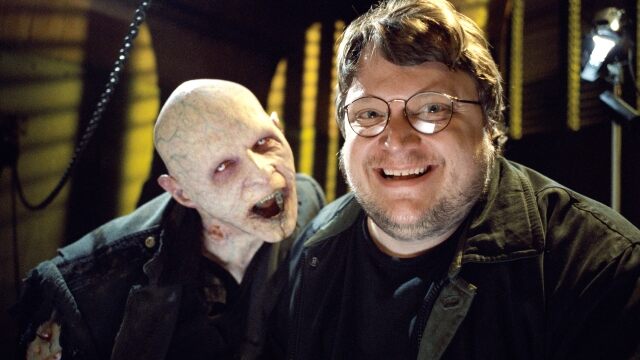
Color In Design
One of the rules I do believe in wholeheartedly is the floor of the set needs to be darker than the rest of the set, because it anchors the set. And this is something I’m absolutely sure of. If the floor is light, the whole set goes down in visual value considerably. So your floor needs to be darker than the rest of the set. 1
Style and Plot
When I was growing up, I was reading an entire encyclopedia of art that my father had in his library. I became familiar at the same time with the greatest painters and their story and their method, so at a very early age I understood the value of visuals as a language.
To me the least interesting thing is plot. It’s the thing I spend the least on, because the ‘what’ is momentarily interesting, the ‘how’, the ‘where’, the ‘who’, those are interesting things.
We are an audio-visual art form, particularly cinema, which has a different gravity value in composition and in weight than other mediums, be it cable TV, download, whatever. It has a particular weight, cinema. And when we discuss a movie, even critically, we discuss what is it about, what character is in there, what are the plot points. We seldom discuss the style.
Style is substance. In our craft, the style is substance; it’s the difference between eye candy and eye protein. Eye candy is just there to please you; eye protein is there to nurture the story. And color is a huge part of it.
I always say the analogy of our craft with other crafts, that are really analyzed, is if a painting by Van Gogh was a movie, you would say how was the painting? It’s about a bedroom with a bed and a chair and a window. Oh god, I’m not gonna go see that, you know. Is that the value of a painting? No, why should it be the value of the movie? Movies are an audio-visual experience, and some of the most sacred, intimate moments we have with movies, are moments that are not possible to put in words, if you don’t analyze them and decompose them into audio-visual elements.
And we don’t talk about our craft like that, and it’s really dangerous because we are writers and readers, and if we write meticulously and we don’t read meticulously, there’s a moment in which this communication and the sanctity of our craft is broken.
Every day I watch one or two movies minimum, every day. And I review more than view; I try to stay current, but I review more than view. And I try to break down the movies that I love into elements. How does it work? Why does it work? 1
Casting Younger Actors
In the case of the kids, I cast their eyes. I always cast eyes, the way they see, because what is movie making? Movies are about people seeing things and us seeing them see them. So you focus on the eyes of the actor most of the time, that’s the focus.
In casting auditions with kids, the first thing I look for is, are they seeing me? I say, look at that. Look at this. Look around us. And if their eyes are curious and their eyes are present, I cast them. 1
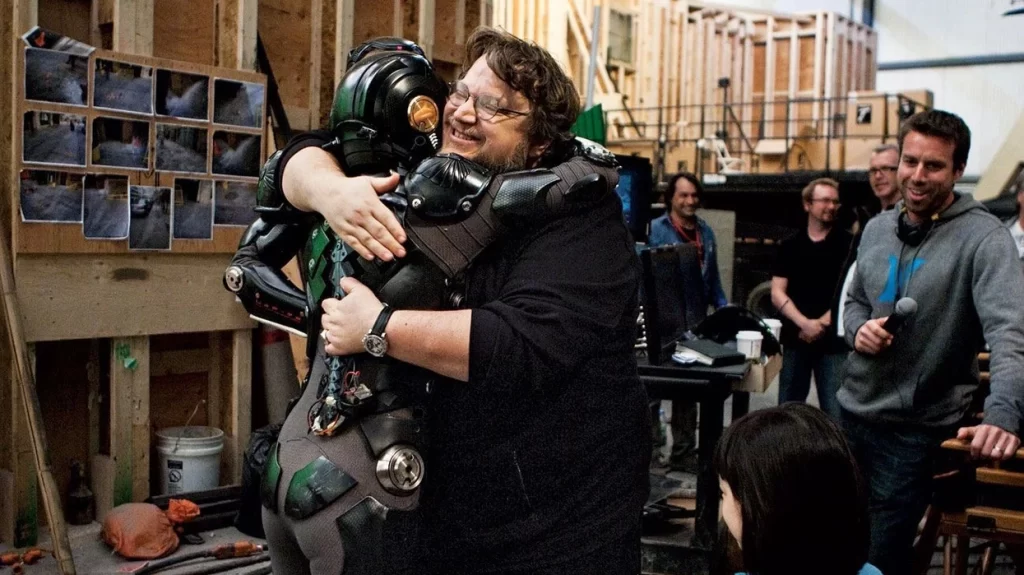
Directing Actors
The key to directing actors is casting them well, number one. Bad dialogue with a good actor may sound good. Great dialogue with a bad actor will never sound good. So casting is 50% of directing an actor. 1
Richard Jenkins, the first day I saw he wanted space for three, four takes. I needed to give him space, and you just acknowledge it.
When you are young and you’re directing, you overdo it, right? You go after every take. No, instead you should watch. Why? The best relationship between a director and an actor is not dictation, it’s observation. You know why? Because you are not ordering a piece of fabric, you are going to the most luxurious shop of silk, and they’re gonna unfurl in front of you, fifty types of the richest silk. If you order B 69 in red, that’s all you’re gonna get. The tango between the actor and the director is you observe, you watch and you adjust, but you observe. Their instinct is where they’re naturally going to go, and it can be great to subvert it and say, try this other thing.
And how do you go and adjust? Short and sweet, and always a verb. Give them something to do. Do not talk to them about the history of the character and the psychology. No, what do you do? Try this way. Don’t look at her. Look at her. Wait for this line to turn around. Things that are practical.
The actor needs to carry the least amount of weight possible because he’s an explorer, so you don’t put things in their backpack that they don’t need. If an actor understands lenses, you tell him, look, I’m on a thirty-five, or you know, I’m on a wider lens, you explain to them, and they understand where they are if it’s useful to them. If not, you don’t. 1
Editing
I edit every day and am edited up to the day very precisely. For example, if you come on Wednesday, you will have the entire movie up to Tuesday cut in a reasonable shape. Essentially, I have my first cut a week after wrap.
Regarding coverage, I rarely use it. For example, in dialogue scenes around a table, you need coverage for practical reasons.
Working with an editor is a real collaboration. I don’t tell them how to cut; I send them the dailies and let them interpret. Often, the dailies suggest how they should be cut. I want to see what the editor does with them. For instance, if the editor chooses a different take or moment than I expected, it’s a chance to see something new. If I don’t like it, I’ll suggest changes. This process is very democratic, with the ability to undo and try different cuts.
With special effects, editing is precise. Rarely do we not use a shot, and if it happens, it’s for a good reason, like rhythm. Sometimes beautifully animated shots or crane shots are cut for the flow of the film. It’s all about the flow in the end; no one comments on a great crane shot if it doesn’t serve the film’s rhythm.
I cut out silhouettes of heads to put at the bottom of the monitor, because when I’m cutting I want to cut to the screen, to the value of that shot in front of an audience of little heads you know, of seating.
The other thing that I do is this edit every day, because if you edit after you shoot, everything looks great, it’s precious. But if you’ve been living with it for weeks, you don’t do such considerations. You can take things out, you have to be brutal. Look, someone’s gonna be brutal, the audience, the critics, or you,
so it better be you. 1
Art As Therapy
When I was a young director, anything that was different than what I thought was a challenge. Now, it’s an opportunity. What we see as defects are undeveloped merits or virtues. They’re exactly the same. What makes you bad at your job, if you train and hone it, will make you good at it. For example, one of the great directors in the history of cinema, Kubrick, had a very stilted and weird first movie. Its rhythms were off. But then, in films like “Barry Lyndon” or “Eyes Wide Shut,” those same awkward rhythms and stone-solid compositions become style.
I always think the same with biography. I don’t think I want to make a movie about my childhood ever, but I have done it – Pinocchio, I’ve done Hellboy, Devil’s Backbone, I’m the girl in Pan’s Labyrinth, and so on. The biography of my soul is a lot more interesting than the biography of my body. We all exist at two levels: the physical and the symbolic.
What do I mean? You’re watching me right you, I’m watching you. You don’t know who I am, but I represent something, and so do you. To each other, we represent things. The more you’re in the world you realise for example, the person you hate, it becomes a mirror. You hate something in yourself, and that was why you are hating that person.
Biography is useful, not only for you to purge, but for it to be used symbolically by others. 1
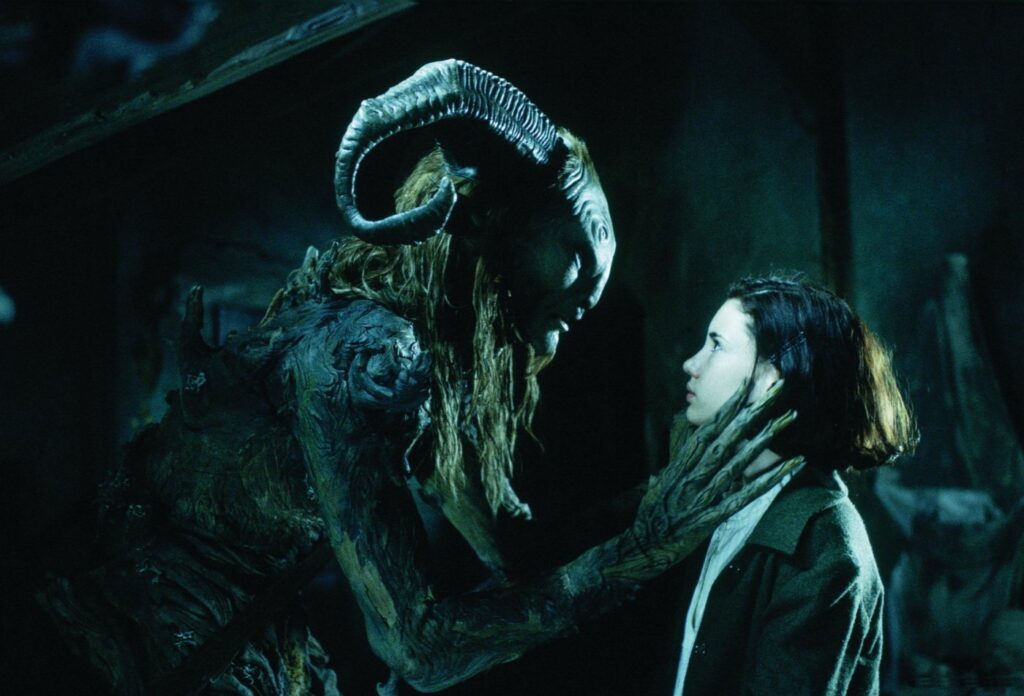
Favourite Films
In 2012, del Toro participated in the Sight & Sound film polls of that year. Held every ten years to select the greatest films of all time, contemporary directors were asked to select ten films of their choice.
- 8½ (Italy, 1963)
- Beauty and the Beast (France, 1946)
- Frankenstein (USA, 1931)
- Freaks (USA, 1932)
- Goodfellas (USA, 1990)
- Greed (USA, 1924)
- Los Olvidados (Mexico, 1950)
- Modern Times (USA, 1936)
- Nosferatu (Germany, 1922)
- Shadow of a Doubt (USA, 1943)
In 2022, del Toro participated in the poll for the second time. His selections were:
- 2001: A Space Odyssey (USA/UK, 1968)
- 8½ (Italy, 1963)
- Barry Lyndon (USA/UK, 1975)
- Bride of Frankenstein (USA, 1935)
- City Lights (USA, 1931)
- Close Encounters of the Third Kind (USA, 1977)
- Goodfellas (USA, 1990)
- Taxi Driver (USA, 1976)
- The Magnificent Ambersons (USA, 1942)
- Nazarín (Mexico, 1959)
- No Country for Old Men (USA, 2007)
- Shadow of a Doubt (USA, 1943) 2
Advantages Of Working On Genre Films
Thematically, when you tackle metaphor or parable, and you need to articulate it through fantastic creatures or circumstances, you are able to personify abstract concepts and make them understandable within the fantasy fable. You can talk about absolutes. It’s very difficult to talk about good and evil when people are involved because we are all a little good and a little evil. But you can do it in pure terms if you are creating demons and angels. Then you can truly use the idea audio-visually at its purest. 3
Set Design
I follow a principle that I got from studying theatrical design: each set has to make one statement. If you go to the pit and the Faun in Pan’s Labyrinth, the whole statement of that set is the circular pit with one monolith in the center. If you go to the Pale Man, the statement is the chimney and the table. Sometimes the point of a set is complexity, but each set has to have a hero angle and make the statement quickly. You know what that set is about.
The office of the Captain in Pan’s Labyrinth is about the gears behind him; he’s trapped in the watch. What’s the point of the central patio in The Devil’s Backbone? The bomb. What’s the point in Hellboy’s room? Cats and TVs. A set needs to be readable quickly and make one storytelling point. 3
Defining His Job As A Director
When you start with Super 8, you are everything. You’re the DP, the sound man, the effects guy. And what I started understanding, by working for other people, is that the best type of director is someone who rose through the ranks. If you want to know how to handle a crew, it’s great to be part of a crew. I did about a dozen movies, and about 20 episodes of TV, in many capacities—assistant director, line producer, storyboard artist.
I understood the communality of making a film. If a director is capable of preserving that and still has a great vision, and a firm understanding of the movie as a piece of art, that’s the best combination. You create a great atmosphere on the set, people enjoy working with you, but at the same time, you are exacting in what you want. It’s half orchestrator and half composer. You are creating the music and directing it at the same time. 3
Advice For Filmmakers
And you know, when anyone approaches me saying, “I want to be a director,” I always tell them, “Then you should just be a director. Don’t say ‘I’m going to be’ because you can direct—good or bad. But you can direct from your iPhone, from your cell phone, with your sister’s cousin’s video camera, with a webcam. Right now, except in the most abject circumstances, most people can get a hold of an image audio-visual generating machine, and they can be directing. And then realize that they are already directing. Directing doesn’t mean anymore, and shouldn’t mean anymore, directing feature films.”
I think, as I said with series like Breaking Bad, I was not only amazed at the way it was written but the way it was staged on camera. It was a really well-directed series. And video games also can do that. And I think that, as long as you have minimal access to any media, you should be a director if you feel like you want to.
The advice I feel is that it’s always better to answer through your work the things you don’t like in a media. If you dislike the movies that are being made, make your own. Show the world what you want to do, what you think this medium should be. And I find that much more creative than simply putting it down and complaining about it. It’s a more active, fascinating role to take.
So, the advice is, if you want to direct, direct. And even easier, if you want to write, write. You know, I think that writing is one of the only things that can be done with very little resources. And even if you died and you were unpublished, you still have a chance. You know, you can’t do that with directing. You need other people, you need a little bit of help, you need at least an actor in front of you.
But, I think this is what I say: Go do it. And you know, when they say, “Oh, I would like you to do this for me,” I produce a lot of first-time filmmakers. But I don’t produce all first-time filmmakers that approach me. And I say, “Look, if I say no, and you give up, I’m sorry to tell you, it’s the wrong job for you.
Because you live with rejection for decades, sometimes, as a director. And you end up making the movie you want to make. So if I say no, that doesn’t mean I’m right or I’m wrong. You just say, ‘I’ll show him later. I’m going to make it, and that fat bastard is going to have to say I was so wrong and hit himself in the head because he didn’t do it.'”
And I think that that’s the thing to do: Show us, don’t tell us. Do the things. And if you do them wrong, but you do them on your own terms, that’s how I define success—failing on your own terms. 4
Sunday Museletter (Free)
Ignite your creativity with hand-picked weekly recommendations in music, film, books, and art — sent straight to your inbox every Sunday.
Next up: Richard Linklater on Filmmaking
References
- The Craft of the Director: Guillermo del Toro, Directors Guild of America
- Guillermo del Toro Wikipedia Page
- DGA Interview Guillermo del Toro, dga.org
- Anyone Can Be A Director, Guillermo del Toro, Big Think

 1 painting, album, film, and book recommendation every week.
1 painting, album, film, and book recommendation every week.